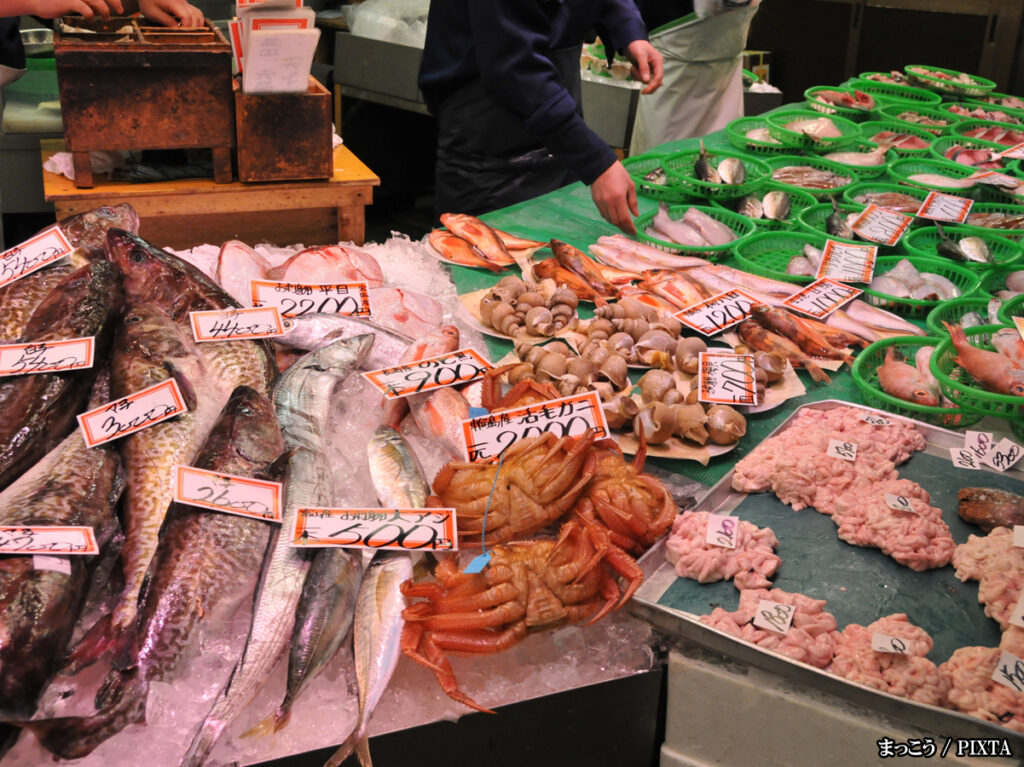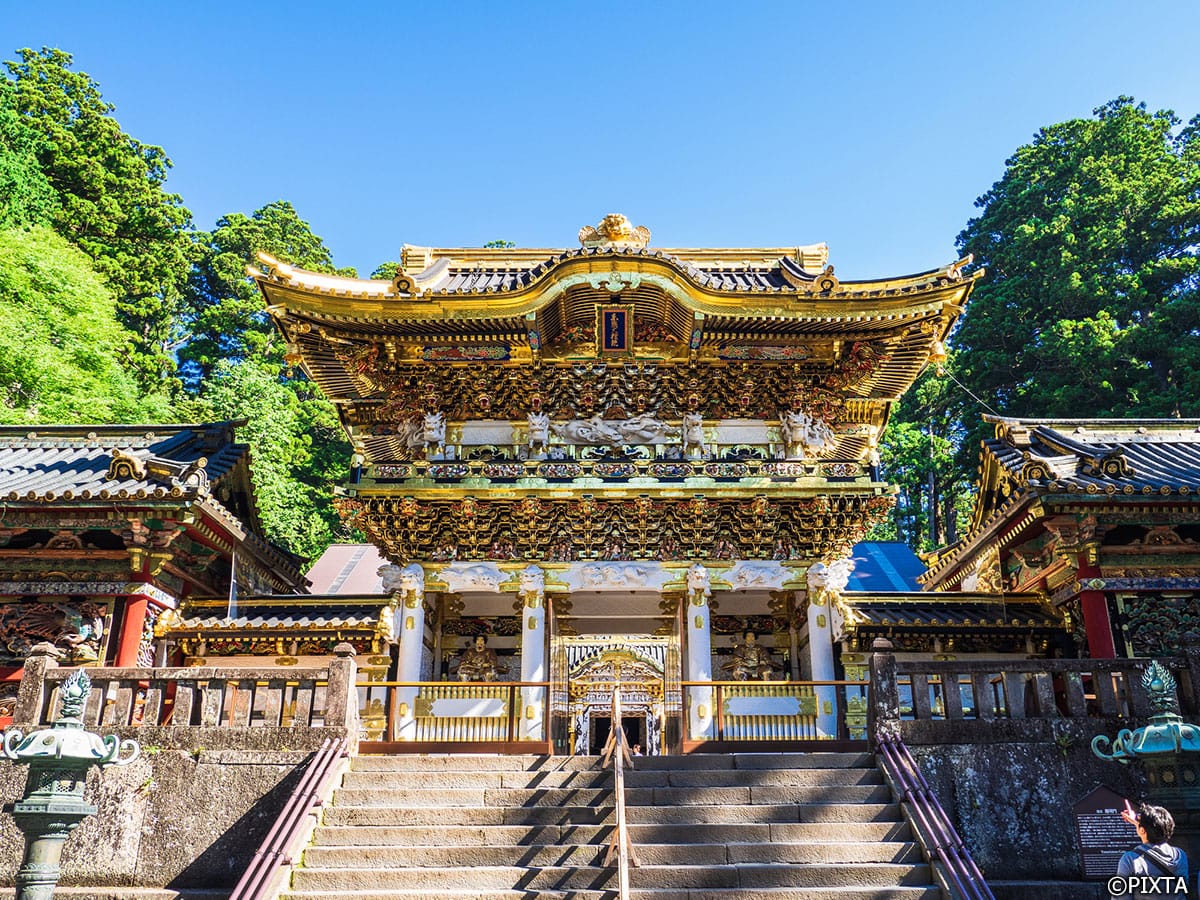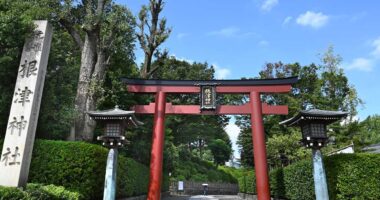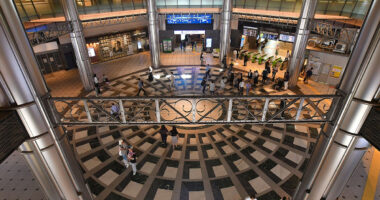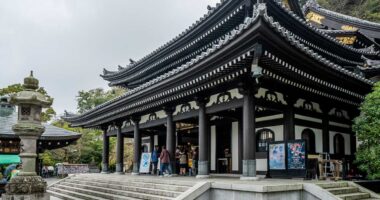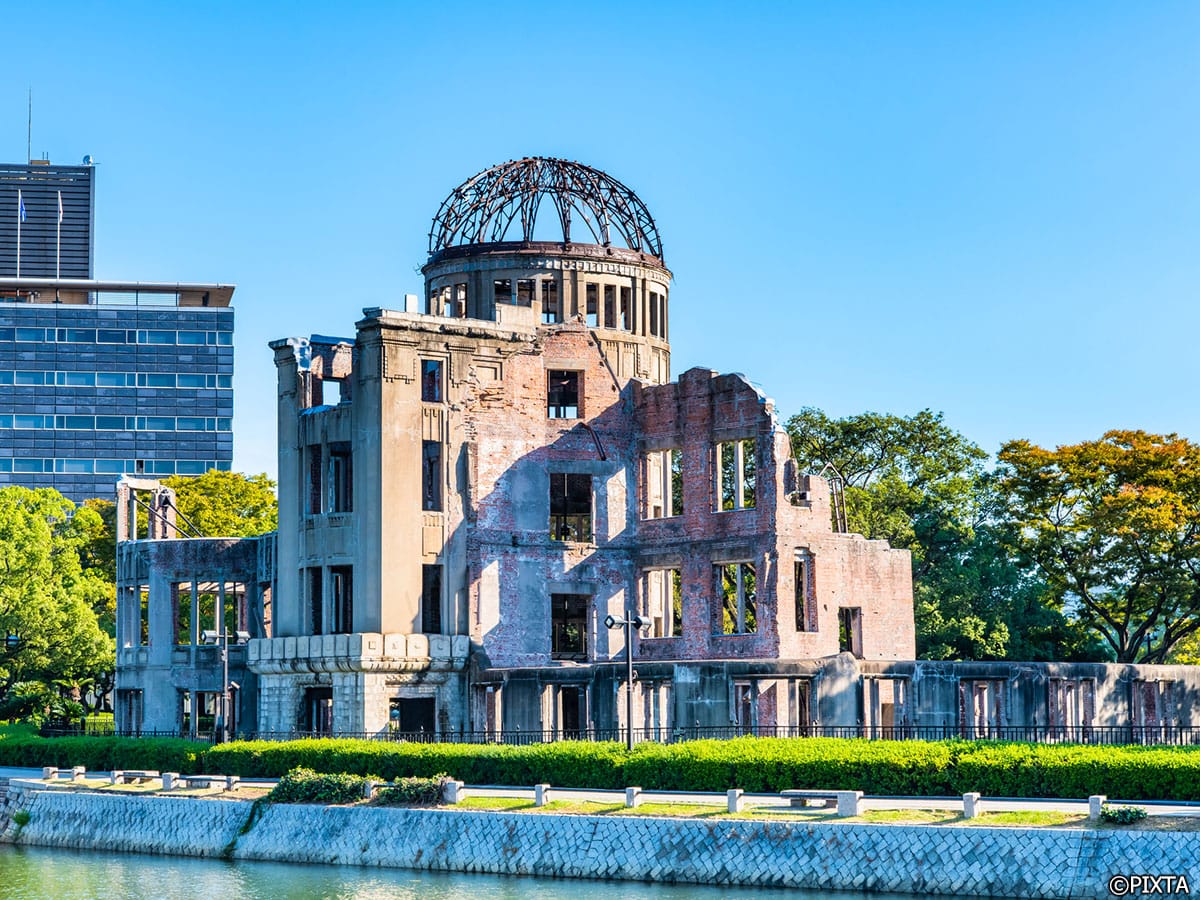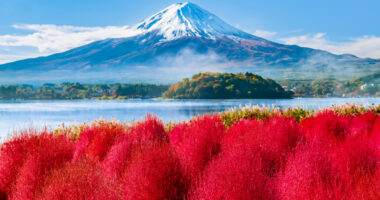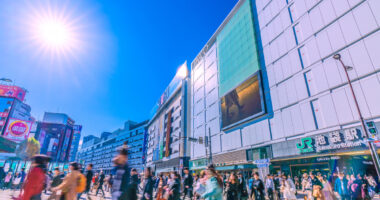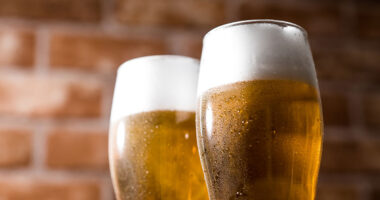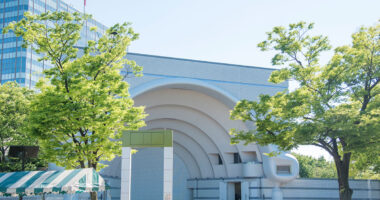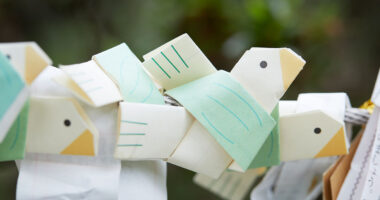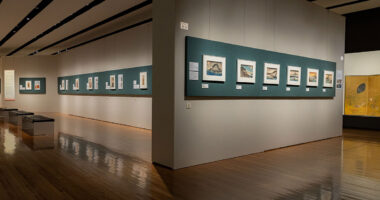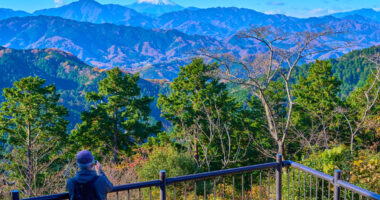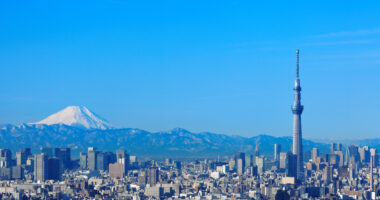With its historic streets, pristine coastline, and deeply rooted culinary traditions, Kanazawa is a must-visit destination for food lovers exploring Japan. Located on the Sea of Japan, the city boasts access to some of the country’s freshest seafood and a long-standing culture of meticulous craftsmanship in both cuisine and presentation. Whether you’re savoring a steaming bowl of rich local stew or indulging in gold-leaf-topped sweets, Kanazawa offers a culinary experience that blends tradition with elegance.
- Getting to and around Kanazawa
- Step 1: Start your morning at Ōmichō Market
- Step 2: Savor a traditional lunch featuring jibuni
- Step 3: Explore Kanazawa’s refined sake and wagashi culture
- Step 4: Experience Kanazawa's dining culture, from street snacks to kaiseki
- Final thoughts: let your appetite guide you through Kanazawa
Getting to and around Kanazawa
- Access: From Tokyo Station, take the Hokuriku Shinkansen to Kanazawa Station (approx. 2.5-3 hours). From Kyoto or Osaka, take the Thunderbird Limited Express to Tsuruga, then transfer to the Hokuriku Shinkansen to Kanazawa Station (approx. 2-2.5 hours total).
- Getting around: Most culinary spots are located in the city center and are easily reachable on foot or by local bus. A one-day loop bus pass is recommended for convenience.
Step 1: Start your morning at Ōmichō Market
What to expect at Omicho Market
Nicknamed “Kanazawa’s Kitchen,” Ōmichō Market has served locals for over 300 years. With more than 170 stalls selling seasonal seafood, premium cuts of meat, regional vegetables, and local sweets, it’s the perfect place to start your culinary adventure.
Narrow alleys filled with the aromas of grilled squid, miso-glazed fish, and bubbling broths offer a sensory introduction to Kanazawa’s rich food culture.
Must-try bites at Omicho Market
- Kaisen-don (seafood bowl): A colorful bowl topped with delicacies like snow crab, sweet shrimp, sea urchin, and tuna.
- Grilled nodoguro (blackthroat seaperch): A buttery, rich white fish native to the Sea of Japan.
- Fresh kaki (oysters): Best in winter, served raw or lightly grilled for maximum flavor.
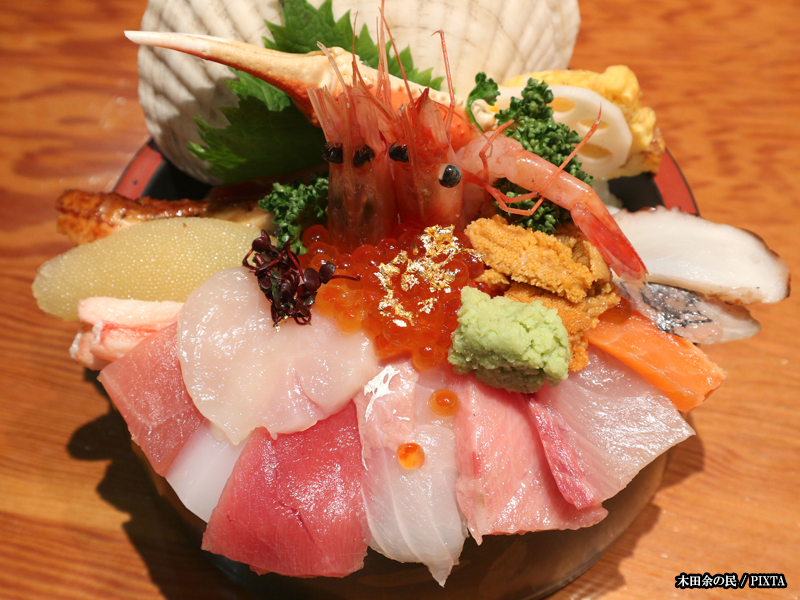
Photo for illustrative purposes
Step 2: Savor a traditional lunch featuring jibuni
What is jibuni?
A beloved representative of Kaga cuisine (traditional dishes from the Kaga Domain, now part of Ishikawa Prefecture), jibuni is a soy-based stew made with thinly sliced duck (sometimes chicken), local vegetables, and fu (wheat gluten cakes). The broth is thick and comforting, perfect for colder months or a hearty midday meal.
Where to eat jibuni
Jibuni is commonly served at many local restaurants, either as part of a set meal or included in a seasonal kaiseki (traditional formal dining) course. It’s especially easy to find around popular sightseeing areas in central Kanazawa.
Practical tips on jibuni
- Average price: 1,500 JPY-3,000 JPY
- Pro tip: Try it as part of a kaiseki meal to sample a variety of Kaga specialties in one sitting.
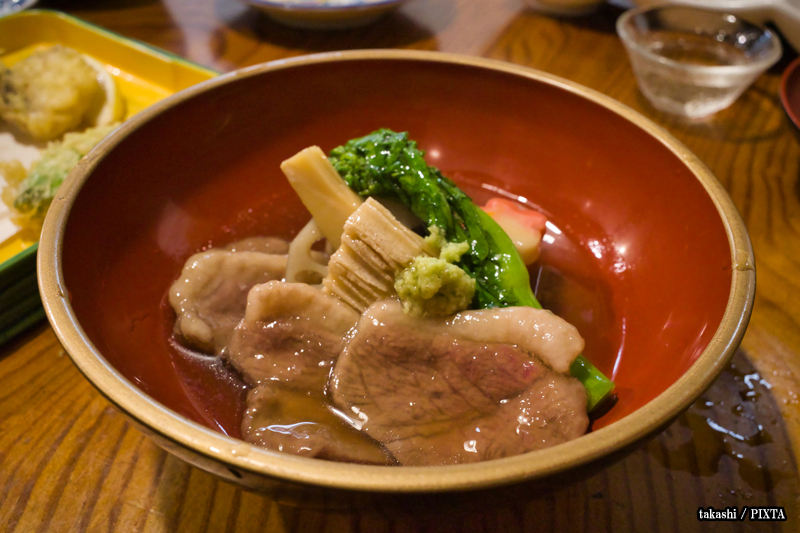
Photo for illustrative purposes
Step 3: Explore Kanazawa’s refined sake and wagashi culture
Sake tasting in Kanazawa
Thanks to the pristine waters flowing from the Hakusan mountain range, Kanazawa’s sake is smooth and elegant. Sake breweries and specialty shops throughout the city offer tastings of dry, fruity, and seasonal varieties.
Sweet traditions and gold leaf in Kanazawa
Kanazawa produces over 99% of Japan’s gold leaf (including edible varieties), often used to decorate wagashi (traditional Japanese sweets), icy sweets, and other treats. This local artistry is as much about beauty as it is about taste.
- Wagashi to try: nerikiri (artistic bean sweets), yōkan (sweet bean jelly), and monaka (crispy wafer sweets).
- Experiences: Many shops offer wagashi-making or gold leaf workshops for visitors looking to get hands-on with local culture.
Practical tips on sake and wagashi in Kanazawa
- Sake tasting: 1,000-1,500 JPY and up for three to five varieties
- Wagashi workshops: 1,500-2,000 JPY per session, on average
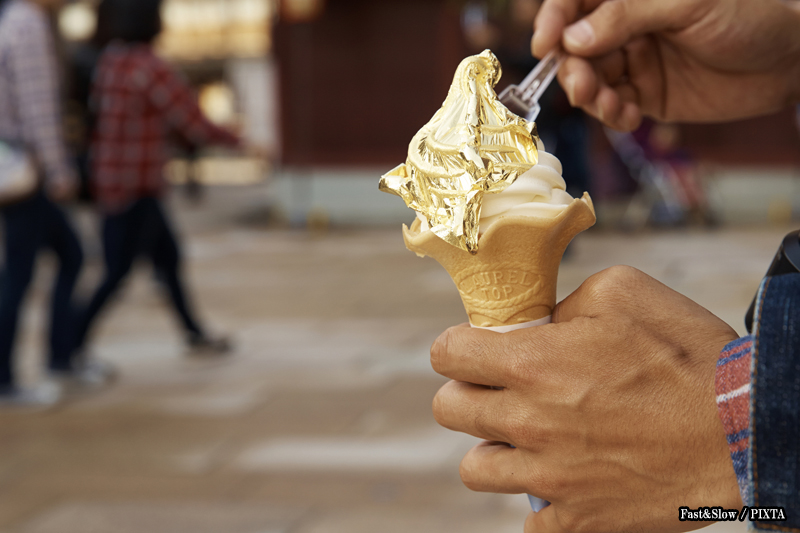
Photo for illustrative purposes
Step 4: Experience Kanazawa’s dining culture, from street snacks to kaiseki
Casual eats in Kanazawa
Perfect for in-between sightseeing stops, Kanazawa has plenty of casual options:
- Izakaya (Japanese gastropubs): These offer fresh sashimi, grilled seafood, and local sake in a relaxed atmosphere.
- Croquette stalls: Especially in Omicho Market, don’t miss Kanazawa-style croquettes, often flavored with curry or local vegetables—ideal for eating on the go.
Mid-range restaurants in Kanazawa
Many mid-priced restaurants offer quality sushi, creative Japanese dishes, and seasonal specialties in modern settings, ideal for lunch or casual dinners.
Kaiseki fine dining in Kanazawa
For a special occasion, indulge in a traditional kaiseki course—a multi-course meal that highlights seasonal and regional ingredients with refined plating and flavors.
Practical tips for dining in Kanazawa
- Reservations: Recommended for popular restaurants and required for kaiseki
- Dinner budget:
- Casual: 1,000 JPY-2,000 JPY
- Mid-range: 3,000 JPY-6,000 JPY
- High-end: 10,000 JPY and up
- Dining etiquette: Remove shoes in tatami rooms. Tipping is not customary in Japan.
Final thoughts: let your appetite guide you through Kanazawa
Whether you’re nibbling skewers at Omicho Market or sitting down to an elegant kaiseki dinner, every bite in Kanazawa tells a story of history, craftsmanship, and seasonal awareness. For travelers who follow their taste buds, this city isn’t just a stop on the map—it’s a destination in itself.
